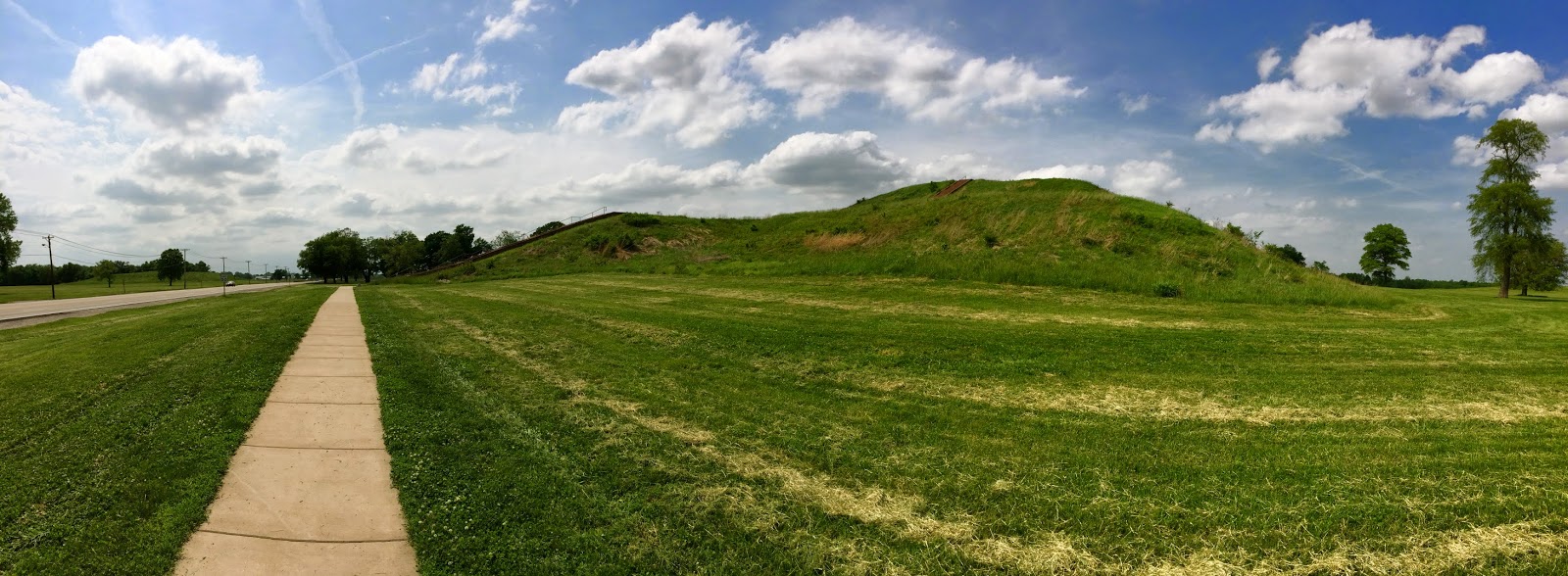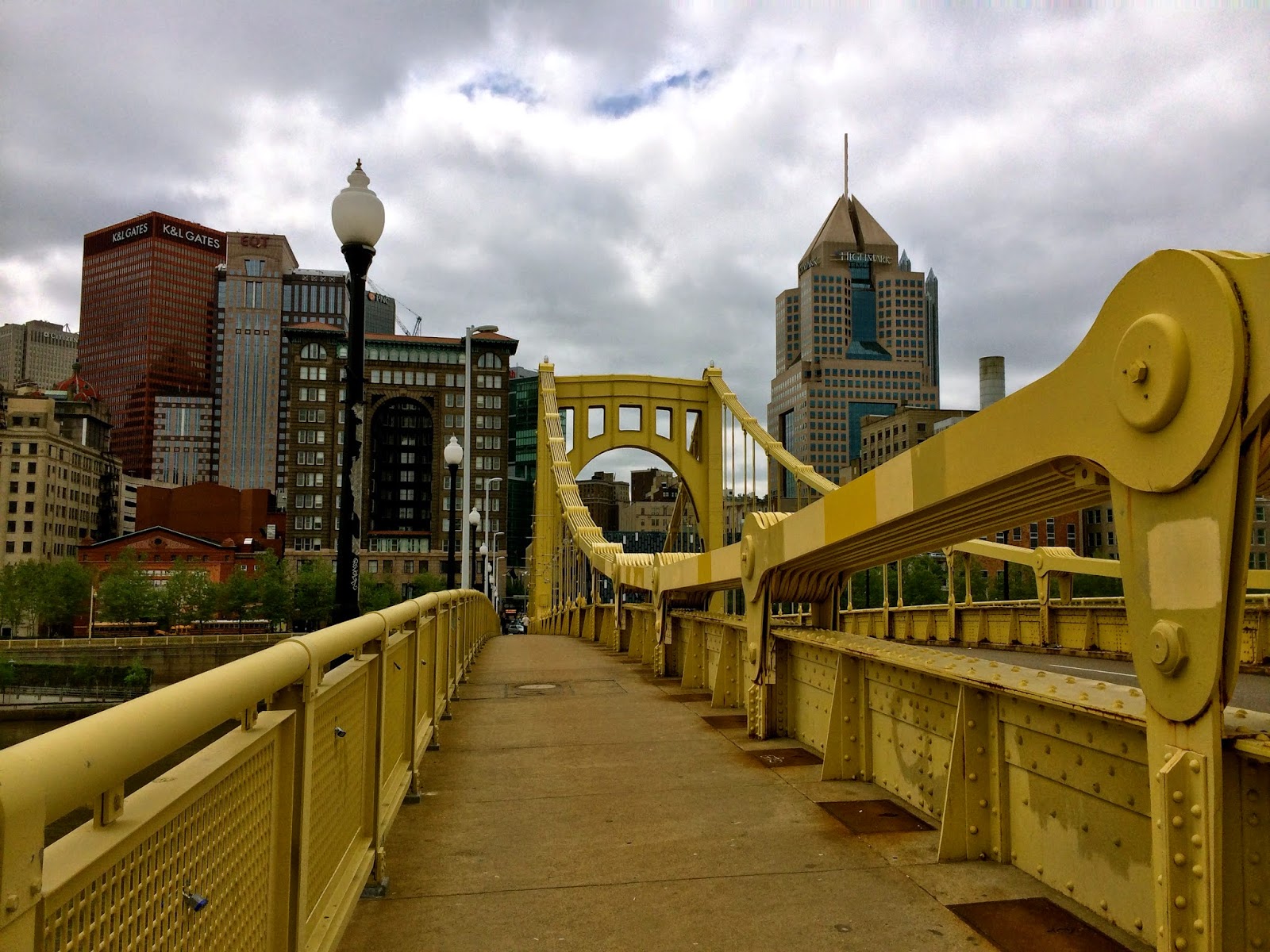Continuing on my drive back to Texas, I camped for a night on Mt. Magazine, the highest point in Arkansas. Although its elevation is only about 2,700 feet, the tabletop summit and vertical cliffs are striking. They stand alone like an island in the sky over 2,000 feet above the hilly river valley below. The views all around are incredible, especially at sunrise and sunset.
The next morning I drove an hour south and went for a run alongside the crystalline waters of Lake Ouachita. Then it was on to Hot Springs where I soaked for an hour in the mineral waters of the historic Quapaw Baths. Full of unexpectedly rugged terrain, endless forests, and glassy lakes Arkansas lives up to its nickname "The Natural State."
Saturday, May 31, 2014
Friday, May 30, 2014
Cahokia
One of the byproducts of my cross country travels these past few years has been a burgeoning interest in ancient North American civilizations. Seeing firsthand the crumbling pueblos of Chaco Canyon and cliff dwellings of Mesa Verde left me wanting to learn more about how people lived on this continent a thousand years ago or more.
In my readings on the subject, I discovered Cahokia, another North American ruin that was once the seat of Mississippian mound building culture. Famed for its monumental earthworks and grand plazas, I added it to my list of places to see and finally had the chance last week as a drove from Wisconsin back to Texas. Surrounded by what is today Collinsville, Illinois just a few miles east of St. Louis, Missouri, it is both a UNESCO World Heritage and Illinois State Historic Site.
Not a lot is known about Cahokia. It's not even known what inhabitants referred to the area as. (It wasn't Cahokia--that name comes from a tribe that lived there much later.) Like Chaco, the mystery adds to Cahokia's allure.
Not a lot is known about Cahokia. It's not even known what inhabitants referred to the area as. (It wasn't Cahokia--that name comes from a tribe that lived there much later.) Like Chaco, the mystery adds to Cahokia's allure.
Many scholars consider Cahokia to be the first city in North America above the Rio Grande and possibly one of the world's handful of examples of the independent rise of urbanism. It is believed that until Philadelphia's population surpassed 30,000 in the early 1800s, Cahokia represented the greatest concentration of people in what is now the United States.
Some of Cahokia's earthen mounds--including Monks Mound, the largest earthwork in North America at over 100 feet tall--date back to the 1050s. Prior to then, the fertile area near the Mississippi River was home to many smaller Indian villages. What forged those villages together into a single, monumental city nearly a thousand years ago is yet unknown. Whether it was a charismatic leader, religious ideology, or natural phenomena will probably forever remain a mystery.
Sadly, Cahokia is not well preserved. A road cuts through what was once the city's Grand Plaza and many of the mounds were leveled in decades past to develop subdivisions and shopping centers. It was hard not to be distracted by these ugly interruptions of modernity. But a sliver of the ancient city's greatness can still be glimpsed standing on the top of Monks Mound and gazing out across the plaza below.
Wednesday, May 28, 2014
Pittsburgh
A few weekends back, I skipped my own graduation so I could attend my sister's in Pittsburgh. Despite living in Pennsylvania's other big city for four years, I'd never before made it to the Steel City. My family and I drove there from Wisconsin.
The first thing that struck me about Pittsburgh was how green and hilly it is. Visitors approach the city by passing through a narrow tunnel that opens into a high bridge, which feels like it is at eye level with the tops of the city's skyscrapers. Below are the rushing waters of the Monongahela, Allegheny, and Ohio--Pittsburgh's famous three rivers.
Up close the city is cramped and rusting. It is finely wrought and reminiscent in its architecture of Philly, but past its heyday and in decline (also much like Philadelphia). With my sister as our tour guide, my family traversed one of three identical yellow bridges, dined downtown at "Meat and Potatoes," wandered Carnegie Mellon and the University of Pittsburgh's overlapping campuses (including Pitt's towering Cathedral of Learning), and lingered amidst the orchids and butterflies of the Phipps Conservatory. That's about all there is to see in the city, my sister said.
She graduated the next day on CMU's campus. We had an apartment cooked dinner that evening, then my family and I began the twelve hour return drive to Wisconsin early the next morning.
Subscribe to:
Comments (Atom)

































































